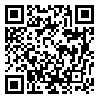Volume 5, Issue 4 (December 2007)
IJCE 2007, 5(4): 247-265 |
Back to browse issues page
Download citation:
BibTeX | RIS | EndNote | Medlars | ProCite | Reference Manager | RefWorks
Send citation to:



BibTeX | RIS | EndNote | Medlars | ProCite | Reference Manager | RefWorks
Send citation to:
Shakib H, Ghasemi A. Considering different criteria for minimizing torsional response of asymmetric structures under near-fault and far-fault excitations. IJCE 2007; 5 (4) :247-265
URL: http://ijce.iust.ac.ir/article-1-328-en.html
URL: http://ijce.iust.ac.ir/article-1-328-en.html
Abstract: (33607 Views)
An attempt has been made to explore the general trends in the seismic response of planasymmetric
structures when subjected to near-fault and far-fault ground motions. Systems with
structural wall elements in both orthogonal directions considering actual and common nonlinear
behavior under bi-directional excitation were studied. Idealized single-storey models with uni-axial
eccentricity were employed. The main findings are: The rotational response trend considering
actual behavior method would be different from common behavior method assumption, when the
system subjected to near-fault motions. In the former case, the minimum rotational response could
be achieved, when stiffness and strength centers are located on opposite side of the mass center. In
the latter case, stiffness eccentricity determines the minimum and maximum rotational response.
General trends in the rotational demand for far-fault motions, considering two type behavior
assumptions, are similar to the last case. Moreover, in near-fault motions, when stiffness and
strength centers are located on opposite side of the mass center, stiff side displacement demand
would be greater than that soft side which is contrary to the conventional guidelines. While, in farfault
motions similar to near-fault motions which stiffness and strength centers are located on one
side of the mass center, displacement demand would be according to conventional guidelines.
Type of Study: Research Paper |
| Rights and permissions | |
 |
This work is licensed under a Creative Commons Attribution-NonCommercial 4.0 International License. |





